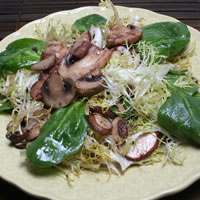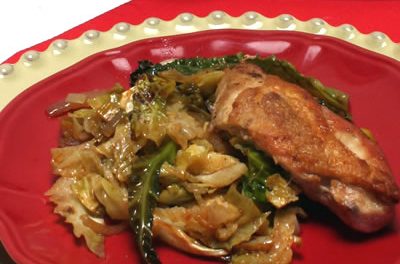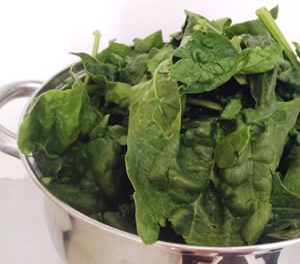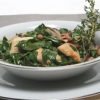Armenian cooking is probably unknown to you, but sample it and you'll discover it is surprisingly familiar. This is because dishes from this landlocked, often war-torn country are full of well-known Mediterranean, Near Eastern and Middle Eastern flavors. The flavors reflect the influences of neighboring Turkey, the Caucasus Mountains of Georgia and the Persian food of northern Iran.
In Armenian dishes, you will recognize yogurt, bulgur, chickpeas, tahini and rice. Also, the liberal use of vibrant fresh herbs, including parsley, mint and cilantro, and the spicy and warm flavors from cumin, cinnamon and the hot red peppers popular in eastern Turkey. Like the Turks and Greeks, Armenians like lemon to brighten the flavor of their dishes, but they use green beans, tomatoes and bell peppers more often. Still, while using many of these same ingredients, Armenian cooks put them together in their own way.
I first discovered their boldly flavored cooking from Armenian friends who invited me home to feast on dishes made by their grandparents, most of whom arrived in the U.S. in the early part of the last century to escape violent persecutions and upheavals.
Unless you live in an area with an Armenian community, there are few Armenian restaurants where you can experience this complexly flavored cooking. You could rely on recipes from the Internet and from informative cookbooks, including The Armenian Table, by Victoria Jenanyan Wise. Like other Armenian-Americans, she delights in teaching how to make her family's favorite dishes, using ingredients found in most supermarkets these days.
Kufta, "meatballs" that blend bulgur with vegetables or meat, are an Armenian specialty. These, made of chickpeas, have a nut filling. They make a meatless dish that is festive, substantial and satisfying enough to please meat eaters, too.
Chickpea Kufte with Walnut Filling
Makes 4 main course servings.
Ingredients
- 3/4 cup medium bulgur
- 3/4 cup finely chopped onion, divided
- 1 can (15 oz.) chickpeas, rinsed and drained
- 1 large egg white
- 1/4 cup flat-leaf parsley leaves
- 1/4 tsp. red pepper flakes, divided
- 1/2 tsp. salt, divided (or according to taste)
- 1 Tbsp. extra virgin olive oil
- 1 tsp. ground cumin
- 2 Tbsp. chopped walnuts
- 1/4 cup chopped cilantro
- 2 Tbsp. dried currants
- 1 cup fat-free plain yogurt
- 2 Tbsp. tahini
- 1 Tbsp. lemon juice
- small wedges of tomatoes (optional)
Directions
- In a small bowl, soak bulgur in 1 cup hot water for 30 minutes. When tender, place it in a food processor. Add 1/2 cup onion, chickpeas, egg white, parsley, half the red pepper flakes and 1/4 tsp. salt. Pulse, scraping down bowl as needed, until mixture forms a crumbly dough, about 30 seconds. Turn onto a cutting board. Knead until a grainy, tacky dough, about 1 minute. Spread on a plate, cover and chill 1 hour.
- To make the filling, heat oil in a small pan over medium-high heat. Saut� remaining onion until translucent, about 4 minutes. Remove from heat. Mix in cumin, nuts, cilantro, currants, remaining red pepper flakes and 1/4 tsp. salt. Set aside to cool.
- Form chilled dough into 24 balls, rolling it in your palms. Insert thumb almost to the bottom of the ball to form a cup. Spoon in 1 tsp. filling. Pinch and smooth sides over filling, sealing it inside. Repeat, filling all the kufte. To a large pot of hot water that is barely bubbling, gently add 12 balls. Cook 6 minutes, or until they rise to the surface. Transfer to a plate with a slotted spoon. Repeat with remaining kufte.
- Mix yogurt with tahini, lemon juice and remaining salt for a dip to serve with the kufte. Arrange kufte on a serving plate lined with leaves of soft lettuce. Garnish with tomatoes.
Nutritional Information Per Serving (Main-Course):
339 calories,
12 g. total fat (1 g. saturated fat),
49 g. carbohydrate,
14 g. protein,
11 g. dietary fiber,
671 mg. sodium.
Diabetic Exchanges: 2 Medium-Fat Meat, 3 Starch/Bread, 1 Vegetable, 1 Fat
0
AICR








